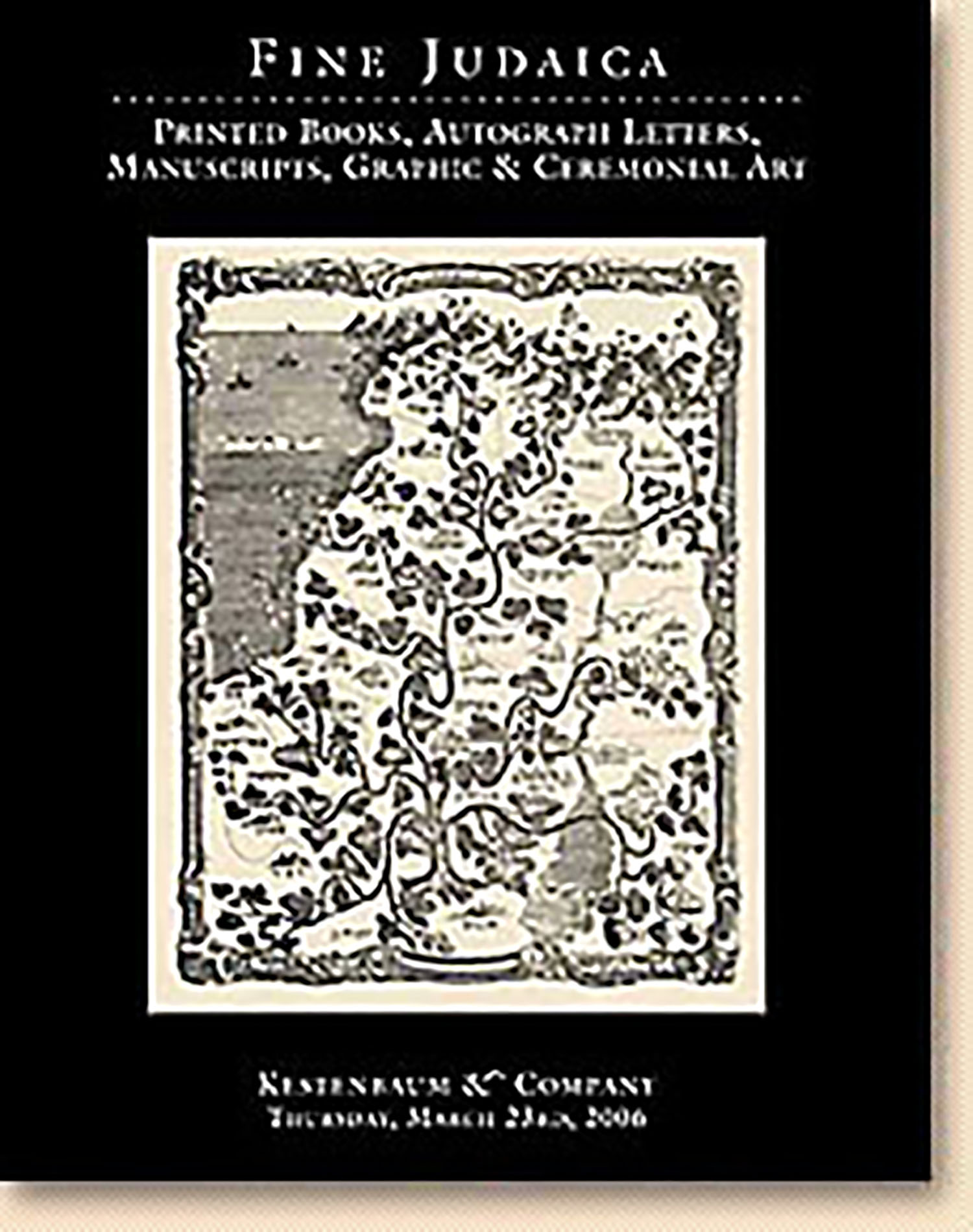(Foremost Rabbinic leader in Germany, 1808-88). Autograph Manuscript, Commentary to the Chumash - Book of Devarim [Deuteronomy] (only).

AUCTION 32 |
Thursday, March 23rd,
2006 at 1:00
Fine Judaica: Printed Books, Autographed Letters, Manuscripts, Graphics and Ceremonial Art
Lot 235
HIRSCH, SAMSON RAPHAEL.
(Foremost Rabbinic leader in Germany, 1808-88). Autograph Manuscript, Commentary to the Chumash - Book of Devarim [Deuteronomy] (only).
Frankfurt am Main: 21st Teveth, (1873) - Thursday night, Nitzavim, 5636 (1876)
Est: $50,000 - $70,000
Lengthy Autograph Manuscript of Samson Raphael Hirsch's Magnum Opus.
“R. Hirsch’s magnum opus, his crowning literary achievement, was unquestionably his translation and commentary on the Torah, which includes within its pages all the major themes of his long and fruitful life...The Commentary quickly became the definitive commentary...for German Orthodoxy. See E.M. Klugman, Rabbi Samson Raphael Hirsch [A Biography] (1996) pp. 330-34.
Hirsch’s biographer, E.M. Klugman, observes that Hirsch's Commentary on Devarim (Deuteronomy) was written during perhaps the most stressful and turbulent period in Hirsch’s life - the time of the “Austritt,” or Orthodox secession from the mainstream Jewish community of Frankfurt. And yet, the Commentary appears to have been written with great tranquility of mind. See Klugman, pp. 154-157, 334.
The Commentary is distinguished by its acute focus on language, its magisterial command of Talmud and Codes and finally, its highly original symbology. Additionally, it develops the idea of a philosophy of Halacha, a thinking that was further augmented in later years by J.B. Soloveitchik.
If Moses Mendelssohn's Bi'ur commentary to the Chumash had a particular effect - R. Ezekiel Landau pointed to Mendelssoh's writings as weakening German Jewry's ties to their ancestral religion - Hirsch’s Commentary had the exact opposite effect, by strengthening the ties of 19th-century cultured German Jews to tradition
With its more recent translation into Hebrew and English, the influence of Hirsch's Commentary has now spread far beyond the German-Jewish community.
Hirsch's family honored his wishes and after his death destroyed all his remaining literary manuscripts. Hirsch wished his legacy to be gleaned only from his published works, material he had thoroughly reviewed and personally approved of for public consumption.
Presently, only Bar-Ilan University possesses any Hirsch papers of any note: The Sanger Collection, mostly correspondence dealing with Hirsch's involvement with Russian Jewry. (DK LATER MEMO: NOT SO!!!!)
Thus, the present autograph manuscript of Sepher Devarim is no doubt the only important literary manuscript of such comprehensive length, written by Samson Raphael Hirsch, likely to be sold at auction.
A revised translation of Hirsch's commentary to the Chumash is currently in preparation.
A detailed and careful study of the present manuscript along with a comparison with the published text, would no doubt shed much new light in understanding the development of Hirsch's thinking
